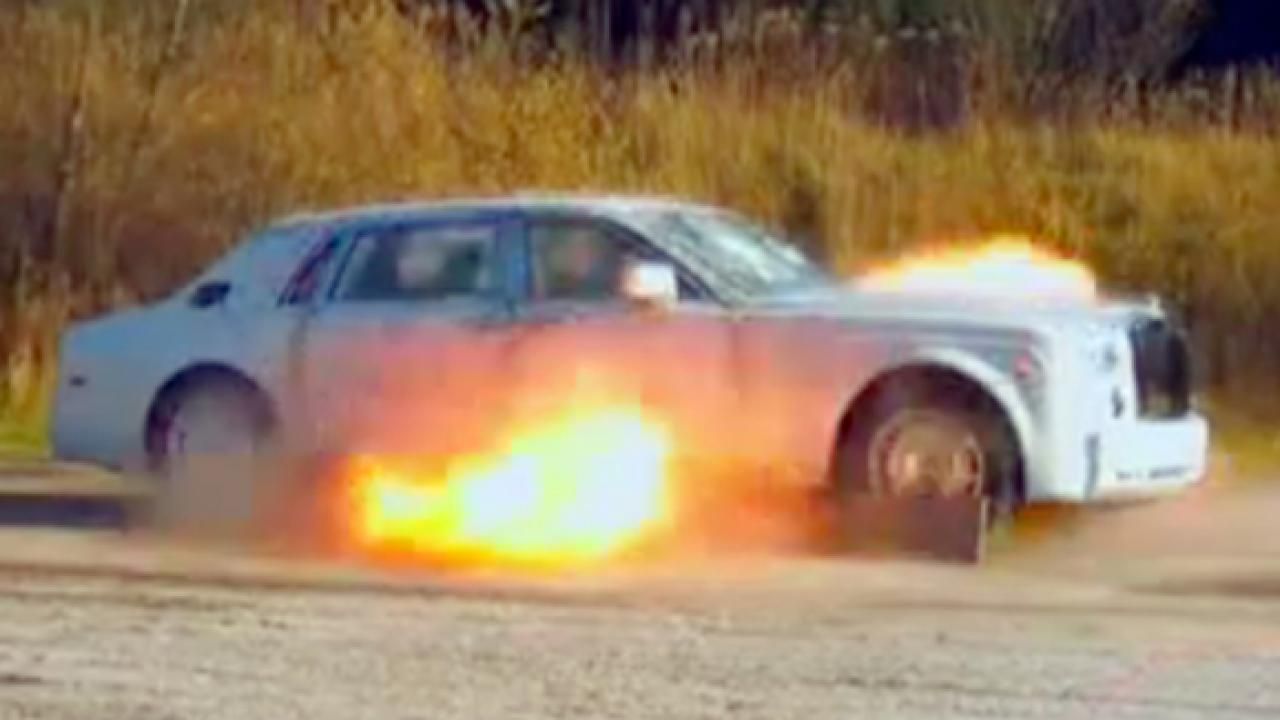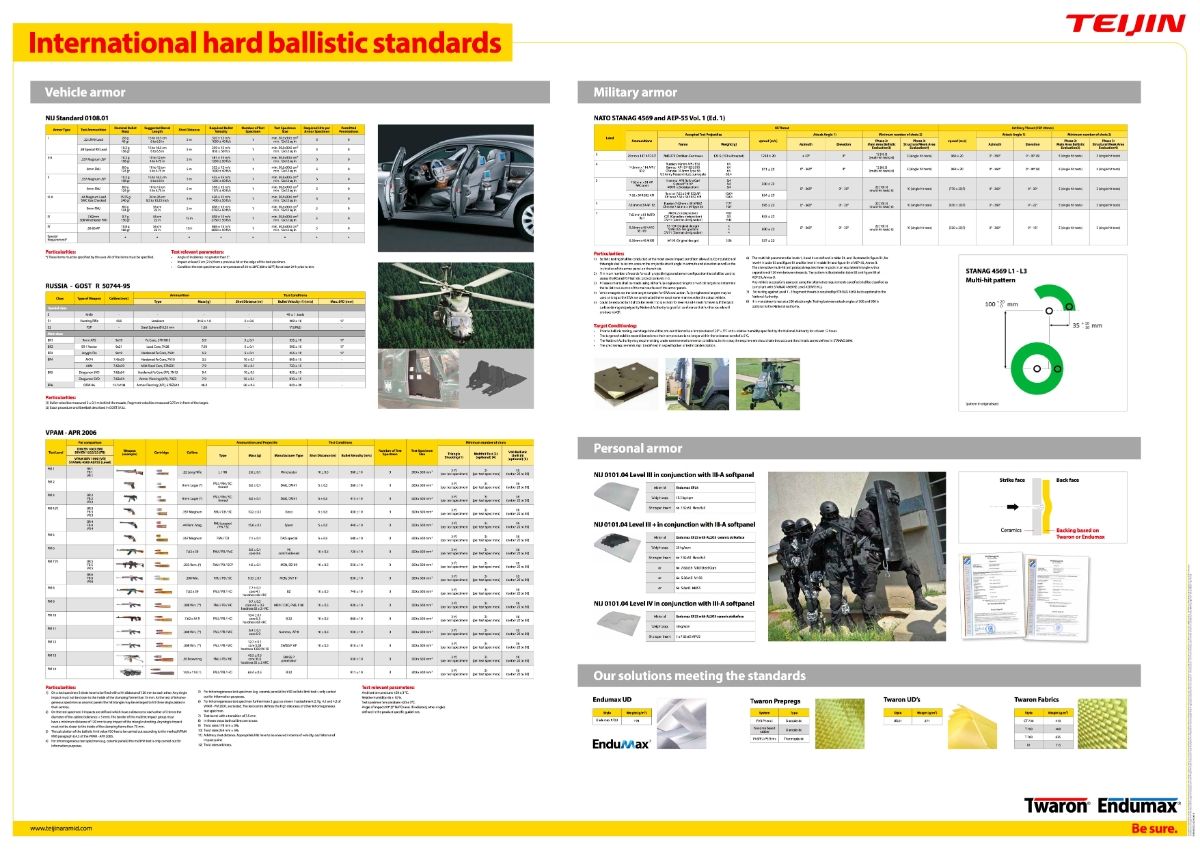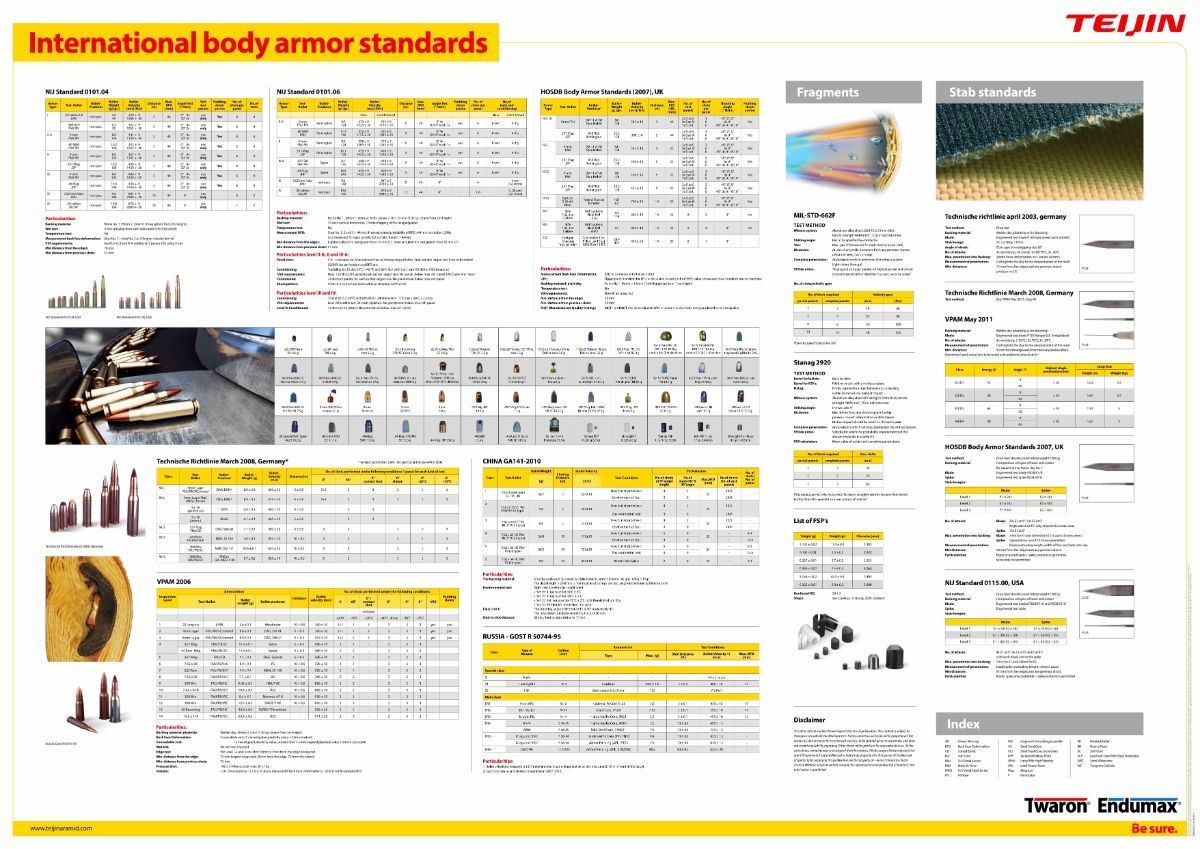
Armor protection
We supply fully developed,engineered and manufactured armored vehicles based on premium and lux class make/models for private, public and commercial clients internationally.Modifications, which for the majority of projects start with a complete factory armored vehicle, may be supplemented with a wide range of options enabling the vehicle to be tailored and equipped for the client’s exact requirements.
Ballistic highlights
The armoring of the car follows the principle of “The Shell-in-The Shell” integrated protection based on many years of experience in building special protected vehicles based on different make/models of sedans and SUVs and other types of the cars.
The strong protective system of the car has immediately met all the personal protection requirements of the relevant authorities in Germany and EU, and are the vehicle to have been comprehensively certificated for ballistic protection in resistance class in accordance with VPAM BRV2009 (Bullet Resistant Vehicles) and for blast protection in resistance class ERV2010 (Explosive Resistance Vehicles).
Protection package
Special security and comfort features - description:
-Protection package VR7,VR9, and VR10
-High load capacity wheels with Run-Flats tires (standard)
-Michelin PAX wheels with Run-Flats tires (option for some make/models)
-Electric window lift (hydraulic power) in front, left/right (standard)
-Electric window lift (hydraulic power) in rear, left/right (option)
-Heated windscreen and backlight (option)
-Fire extinguishing system with manual (standard) automatic activation (option)
-Multi-tone siren or Panic alarm system (option)
-Intercom system for outside communication in combination with siren PAS
-Emergency fresh-air system (option)
-Reinforced floor protection against 3 DM51 (option)
-Armor plated fuel tank Anti-Explosive Self-Sealing fuel tank (standard)
-Reinforced body structure elements, door hinges and overlaps (standard)
-LED reading lamps in the rear, left and right (option)
-Multifunctional business console with different plugs (option)
-Fridge in rear armrest with cup holders (option)
-Switch for emergency boot lid release (option)
-Auxiliary battery for emergency start (standard)
-Disable emergency opening of central looking (option)
-Strobe lights behind radiator grill (option)
-Special functions unit as per request (option)
Ballistic specification:
The armoring of the car follows the principle of “The Shell-in-The Shell” integrated protection based on many years of experience in building special protected vehicles based on different make/models of sedans and SUVs and other types of the cars.
The strong protective system of the car has immediately met all the personal protection requirements of the relevant authorities in Germany and EU, and are the vehicle to have been comprehensively certificated for ballistic protection in resistance class in accordance with VPAM BRV2009 (Bullet Resistant Vehicles) and for blast protection in resistance class ERV2010 (Explosive Resistance Vehicles).
Where explosive charges are concerned, the car has demonstrated its protective capabilities by meeting the requirements of ERV2010 and the Federal Office of Criminal Investigation. Innovative under body armoring almost entirely covers the under body for the first time, a unique feature in the civilian special protection segment.
BRV 2009 specifies much stricter requirements than BRV1999: the main difference between these guidelines is that according to BRV1999 a vehicle can be shot at 45° or 90° only. According to VPAM BRV2009 the vehicle can be shot at ANY angle, which makes it much more challenging, but on the other hand much closer to the real life.
Also the new standard ERV2010 increased the requirements for the protection against side blasts – originally the requirement was to sustain a blast of 15 kg TNT from a distance of 4 m. The charge was put on the ground level.
The new requirement prescribes the detonation of the same amount of TNT,15 kg.
THE BALLISTIC AND EXPLOSIVE TEST LABORATORIES:
TNO HOLLAND - www.tno.nl/en
IABG GERMANY - www.iabg.de/en
TDW at MBDA GERMANY - www.tdw-warhead-systems.com/en
BESCHUSSAMT MELLRICHSTADT GERMANY - www.beschussamt.bayern.de
VPAM BRV 1999 - An acronym for Bullet Resistant Vehicle, this is VPAM’s original testing certification, released in 1999, it was innovative in that it required the whole vehicle to be tested, rather than simply testing the materials used and supplying guidelines to the construction of the vehicle as per other armouring standards.
GOST P50963-96 - Protection armored special cars. General technical requirements.
This standard extends on armored protection of the cars intended for transportation of people, money, valuable and especially dangerous loads, the providing protection of life and human health, safety of values and safety of especially dangerous loads against influence of means of defeat.
The standard establishes the general technical requirements to armored protection of the cars of domestic and foreign production intended for operation in the Russian Federation
VSAG VS6 2012 – Vehicle Security Advisory Group is a UK based QinetiQ Ltd. organisation which has set out various standards approved by the BSI (British Standards Institution) for the design, manufacture, development and testing of armored cars and vehicles. The current highest level in their standards is VSAG-15.
PAS 300:2015 - Ballistic and Blast Testing for Civilian Armoured vehicles (CAV).Test methods for ballistic and blast protection.It defines test levels for ballistic impact (including handgun, shotgun and rifle) and blast resistance for side blast, under vehicle blast and roof blast. As part of the ballistic test it also includes fragment simulating projectile tests.The four test methods described by this PAS are based on the work of the Vehicle Security Advisory Group (VSAG) and are designed to meet the needs of both the European and international markets.
NIJ-0108-01 - National Institute for Justice standard covers not only vehicles but body protection as well, covering 5 levels from 9mm handgun to rifle ammunition.
STANAG AEP55 (level) - is a NATO armoring standard dictating protection levels for occupants of logistic and light armored vehicles stipulating protection from ballistic, artillery and IED blasts. This is a military standard covering 5 levels and is unlikely to be seen in an armored car used by civilians.
Aside from the existing ballistic resistance levels, other detonation classes also exist that are designed to protect our customers from attacks involving hand grenades, land mines and IEDs (self-constructed car bombs). Our armored civilian vehicles also offer protection from these threat levels and have been certified accordingly.
To counteract the rise in threat levels across the globe, some vehicles have even been tested and successfully certified for larger-scale detonation classes that go beyond those required by the standard.
STANAG 4569: Protection Levels for Occupants of Logistic and Light Armoured Vehicles.
VSAG-12: Ballistic and Blast Testing for Civilian Armoured Vehicles (CAV).
VPAM ERV (2010): Detonation of 15kg TNT from 2m at a high of 1m from the side of the vehicle.
ARMORED VEHICLE TESTING
The specialized laboratory tests and certifies armoured civilian and military vehicles as well as platforms. Our special competence is characterised by the combination of ballistic and blast tests with corresponding equipment, such as measurement tools, high-speed video cameras, crash test dummies and pressure sensors. These tests can be performed in accordance with STANAG, VPAM or customer specified standards.
Testing of vehicles and surfaces: Ballistic tests up to 30 mm calibres in accordance with
• VPAM BRV 1999/2009
• STANAG 4569 AEP-55 Volume 1
Hand grenade, fragmentation charge and blast testing in accordance with VPAM ERV 2010
• Underbelly testing of the vehicle
• Testing of the vehicle roof
• Road side blast testing of the vehicle
Mine blast and IED testing in accordance with STANAG 4569
• Underbelly and under wheel/track testing
• Improvised Explosive Device (IED), road-side and underbelly
• Testing in accordance to STANAG 4569 AEP-55 Volume 2 und Volume 3
BALLISTIC TESTING
The specialized tests centers offers full services for ballistic tests and qualifications of materials, various components, bulletproof glass, protected vehicles, infrastructure segments as well as ballistic protective vests. In doing so, all sample sizes are freely selectable.
We conduct tests according to national and international standards, such as STANAG 4569 AEP-55, Volume 1 (Level 1-6) or VPAM APR 2006, as well as customer specific requirements.
Various diagnostic methods, like measuring the yaw angle or residual velocity with high-speed videos, provide ideal possibilities for analysing test results. Apart from that, further customer-specific diagnostic options can be integrated.
EXPLOSION TESTING
The specialized tests centers in the different types of the tests provides all of them in accordance with national and international standards (e.g. STANAG 2280, ASTM F1642, ISO 16933).
To improve the level of protection we test and qualify materials, components, subsystems and overall systems (e.g. facades, windows, doors, automated teller machines (ATM), military components).
These tests can be carried out using particularly developed test rigs.
Ammunition and test charges for conventional and improvised threats (IED) include, among other things:
• KE (projectiles)
• AT-Mines
• Hand grenades
• Blast
• Shell fragments
• EFP (explosively formed projectiles)
• CE (shaped charges)
Through the direct participation in the Teams of Expert (ToE) of STANAG 4569 and 4686 the specialized laboratories are involved in the development of procedures for tests and qualifications in an international context.




